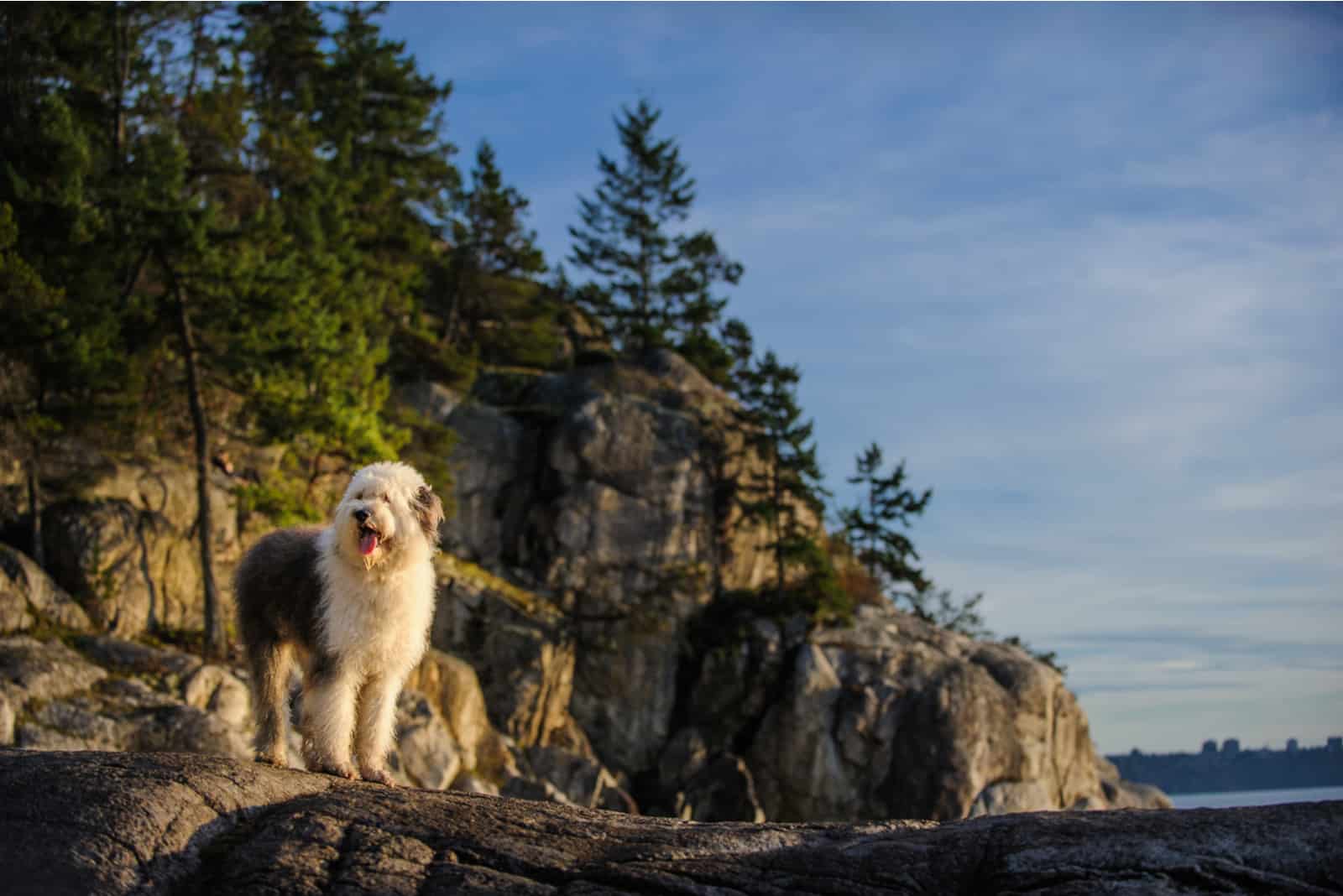”The Shaggy Dogs” really sounds more like a mid 50’s British mod band than a legitimate name for a wide array of dog breeds… Yet, here we are; this is how we categorize them!
What connects these lovable dogs rather than blood relations (well, for the most part) is the wonderful, thick and luxurious coat of fur they brandish.
You have probably met one at some point in your life… that big, beautiful lump of premium hair that looks more like a Yeti than a dog, but it’s, nonetheless, canine to the core.
In today’s article, we explore the silky, wooly world of these wonderful breeds.
What Kinds Of Shaggy Dog Are There?
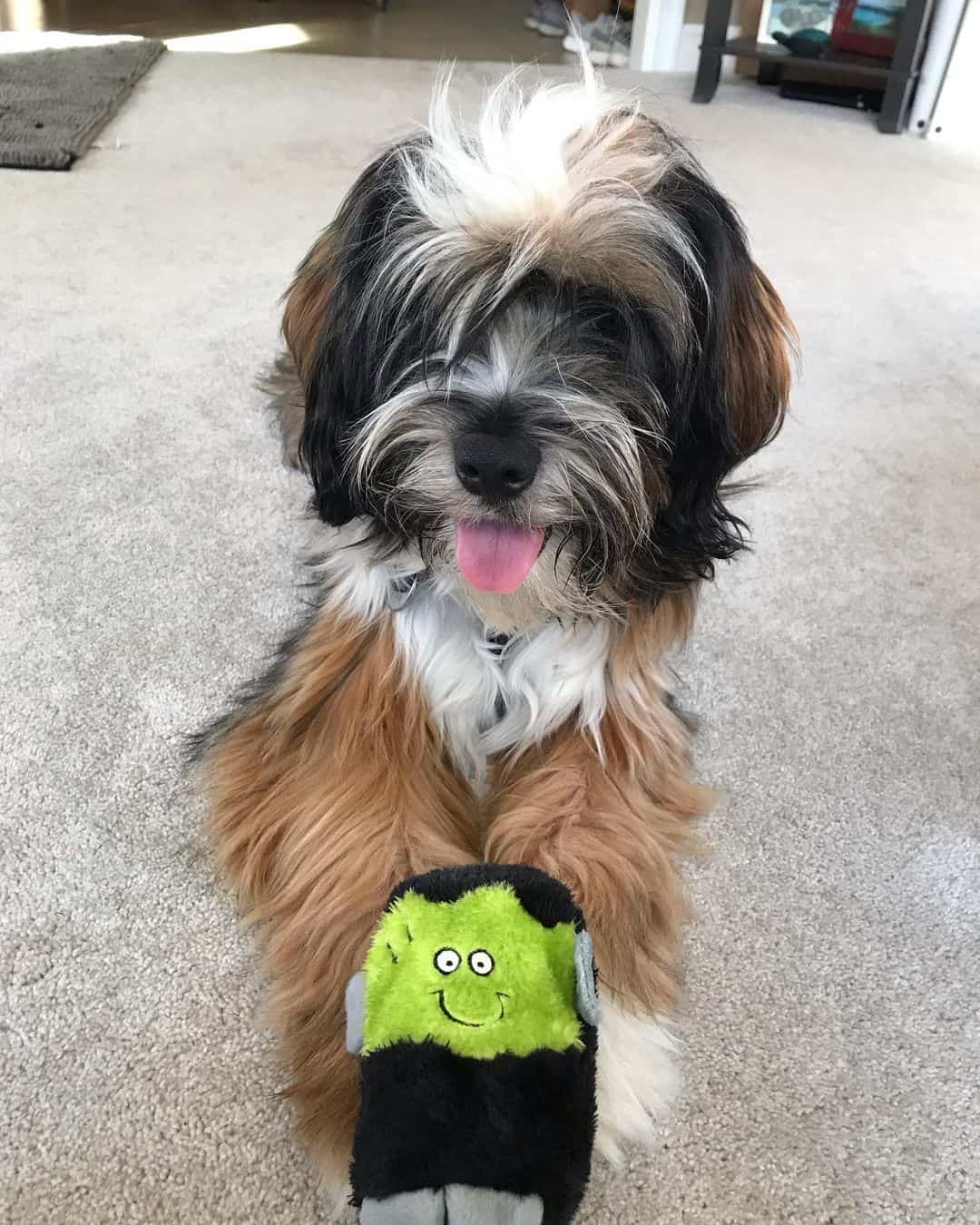
Photo from: @sirwinstonswanderings
This category is decisively dominated by herding dogs that, owing to necessity, developed some impressive topcoats to protect themselves against harsh winters and snowy terrain.
These are also often paired with thick, layered undercoats to further insulate them from hostile weather while herding livestock in the snowy mountain ranges.
There are also several lap dog breeds whose fur never ceases to amaze dog owners, breeders, and bystanders alike.
You might be thinking to yourself: ‘Hmm, well, my dog is pretty shaggy. It’s the shaggiest one I know! I burnt up two vacuum cleaners getting its hair off the furniture’.
While that might be the case, it does not immediately qualify your pooch to be known as a shaggy dog per se.
Ironically, Shaggy Dogs Do Not Shed:
A common shared characteristic of all these dogs, contributing to their popularity, is the fact that their fur is hypoallergenic, meaning that it doesn’t cause allergic reactions.
This makes the breeds a favorite among easy sneezers and nose spray connoisseurs.
Let us dive into the beautiful world of fluffy coat dogs. The bigger the better, so it’s only fair that we start with their larger representatives.
The breed most commonly associated with the term has got to be…
The Old English Sheepdog
Also known as the Bob Tailed Shepherd’s Dog, this breed seems to be as old as England remembers.
In accordance with its name, it is a herding dog that was used by farmers throughout the history of the British Isles to manage and guard sheep and cattle.
This shaggy large dog is at least 24 inches at the shoulder, and can weigh as much as 101 lbs!
Its snout is hidden in thick facial hair, its ears lie flat to the side of the head, and its beady eyes, usually dark brown or blue in color, are obscured by a thick curtain of hair.
When it was done out of necessity, it used to be common for owners to dock the ears and tail of the Old English Sheepdog.
They strode forward in a bear-like fashion, and were very solid and firm on their feet.
This herding breed is very powerful, and it is imperative to teach them not to jump on people because they are often unaware of their own great size and strength.
It is also known to be a great family dog, known for its intelligence, loyalty, and loving empathy towards its owners.
In regards to relationships with other dogs, it stands neither here nor there and it’s important to socialize your OES from an early age onward.
This Big, Fluffy Bear-Dog Needs A Lot Of Space
While it is possible to keep them in an apartment in the right circumstances, this breed is very large and very active, and it’s a good idea to only get one if you have a house with a garden and/or lots of space.
The breed has a thick double coat, and it is imperative that you groom it regularly with the right set of brushes, lest its hair become tangled and unmanageable.
Regular trips to a professional groomer’s salon aren’t a bad idea if you can afford it.
You should feed your Old English Sheepdog quality dog food appropriate for its age, or home cooked meals in accordance with the advice of your vet.
Polish Lowland Sheepdogs
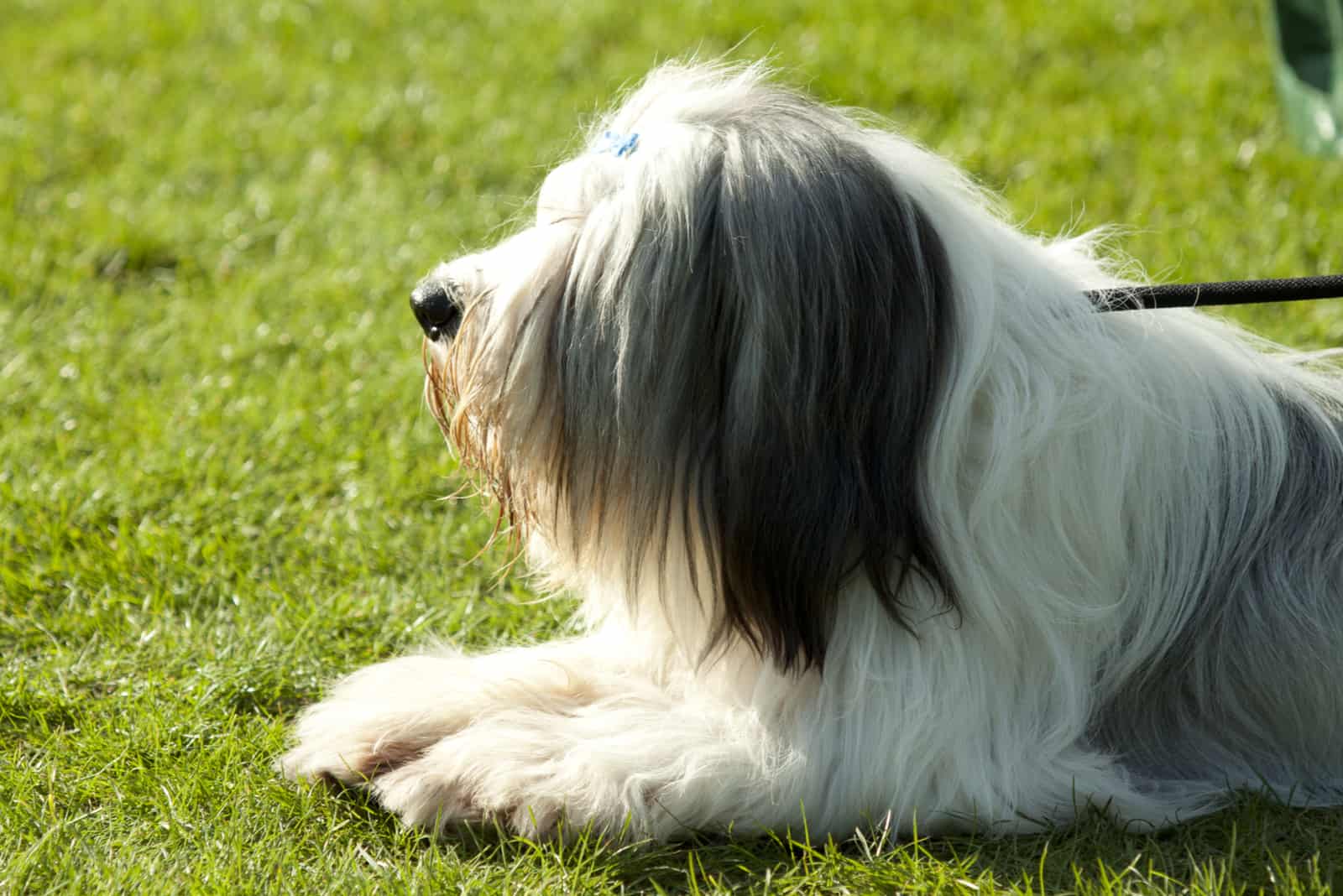
Also known as the PON (Polski Owczarek Nizinny), the Polish Lowland Sheepdog is a medium-sized, shaggy-coated sheep dog breed native to Poland.
Like its English cousin, it had primarily been used to herd and protect sheep in the eponymous Polish Lowlands. It’s somewhat similar to its English counterpart, albeit smaller in size and of a different fur color pattern.
Its height averages 18 to 20 inches at the withers, and its weight falls somewhere around 30 to 50 pounds.
Big Fluffy Dogs Are A Part Of Polish History
The Polish Lowland Sheepdog is said to have been brought to Eastern Europe by the Huns, whose dogs bred with the local stock in order to create PONs. As such, it is a very old breed, and it has seen its share of action, protecting herds on the vast plains of Poland. Wintery open plains are responsible for it being so robust in build, and its long, shaggy coat is rougher on the surface and soft underneath.
Taking Care Of Your Shaggy Polish Sheepdog
This brave, intelligent dog is a point of pride for the Polish people. It’s said to have brought about both the Old English Sheepdog, but also some breeds like the Bearded Collie, etc. way over in the British Isles. This speaks for itself regarding the utility and widespreadness of the breed.
It is naturally lively, and it requires a lot of exercise; thus, it is best suited for a house with a yard.
Like most sheepdogs, it is very alert and protective of its loved ones. They do tend to have a mind of their own and be of colorful character.
This dog does not shed all that much, and its fur is hypoallergenic… a trait that a lot of shaggy dogs share, so it is suitable for people who are sensitive to dog hair.
Its long coat should, however, be brushed at least once a week and perhaps kept short during the summer period.
The Bergamasco
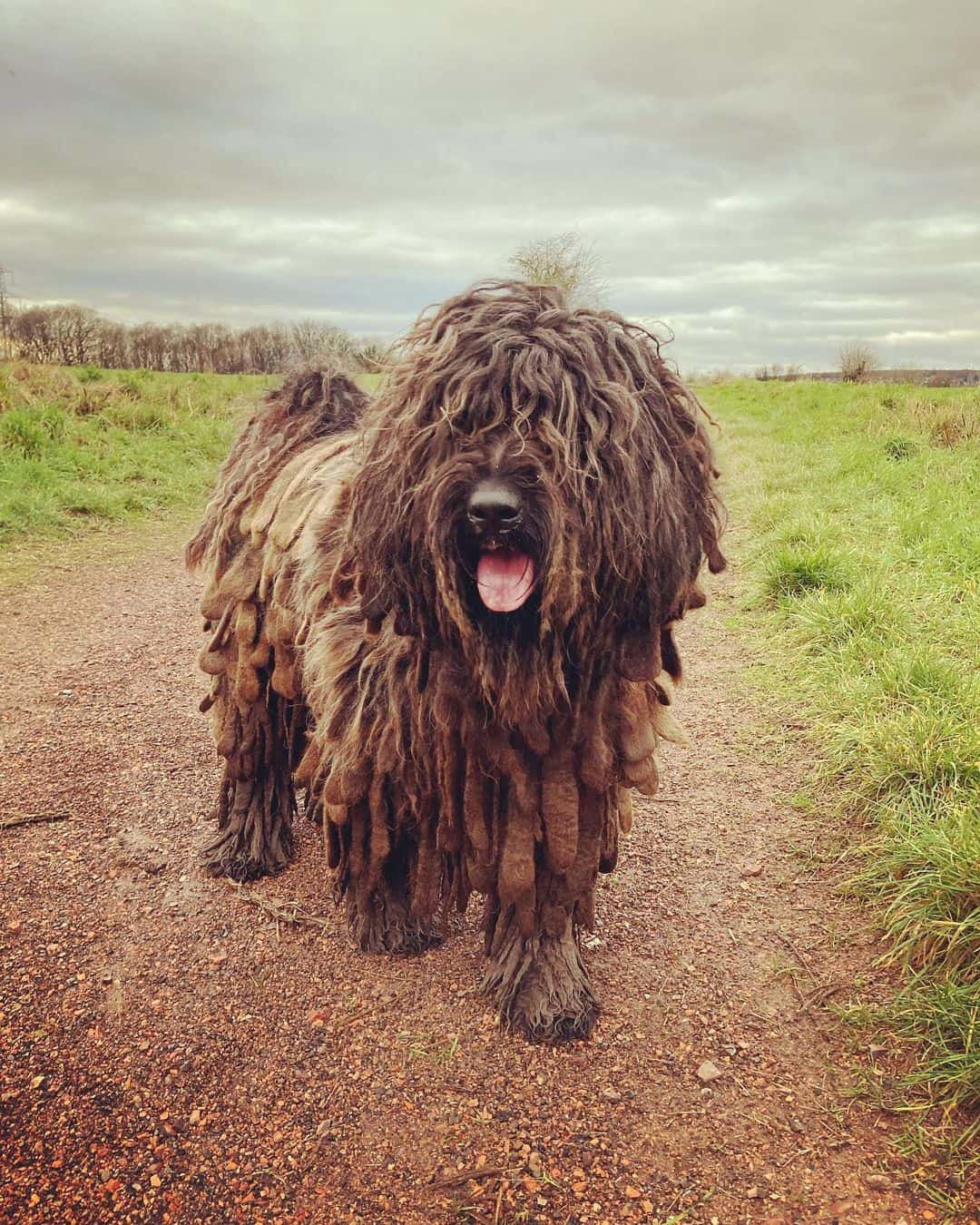
Photo from: @bergamasco_adventures
Bred in the freezing altitudes of the Italian Alps, the Bergamasco is recognizable by its one of a kind fur coat which boasts three different textures that covers every inch of its body like a big, felted rug.
This coat served not only to protect it from the freezing temperatures in which this breed of dog came to be, but also from wolf bites.
While it is most commonly black, it can come in a variety of colors or color mixes.
They get along well with both humans and other dogs, and are very protective of their master. They tend to be a bit disobedient and have a mind of their own.
Treats and positive reinforcements work wonders in your efforts to train and discipline your pooch.
This shaggy dog breed is remarkably low maintenance… they do not need a lot of exercise beyond a reasonable amount per day, and their matted coat shouldn’t be disturbed by anything other than a couple of baths yearly.
Its fur is also hypoallergenic.
This Italian dog is known to be very fond of kids, and it gets along with dogs and even cats due to its submissive nature.
The Bearded Collie
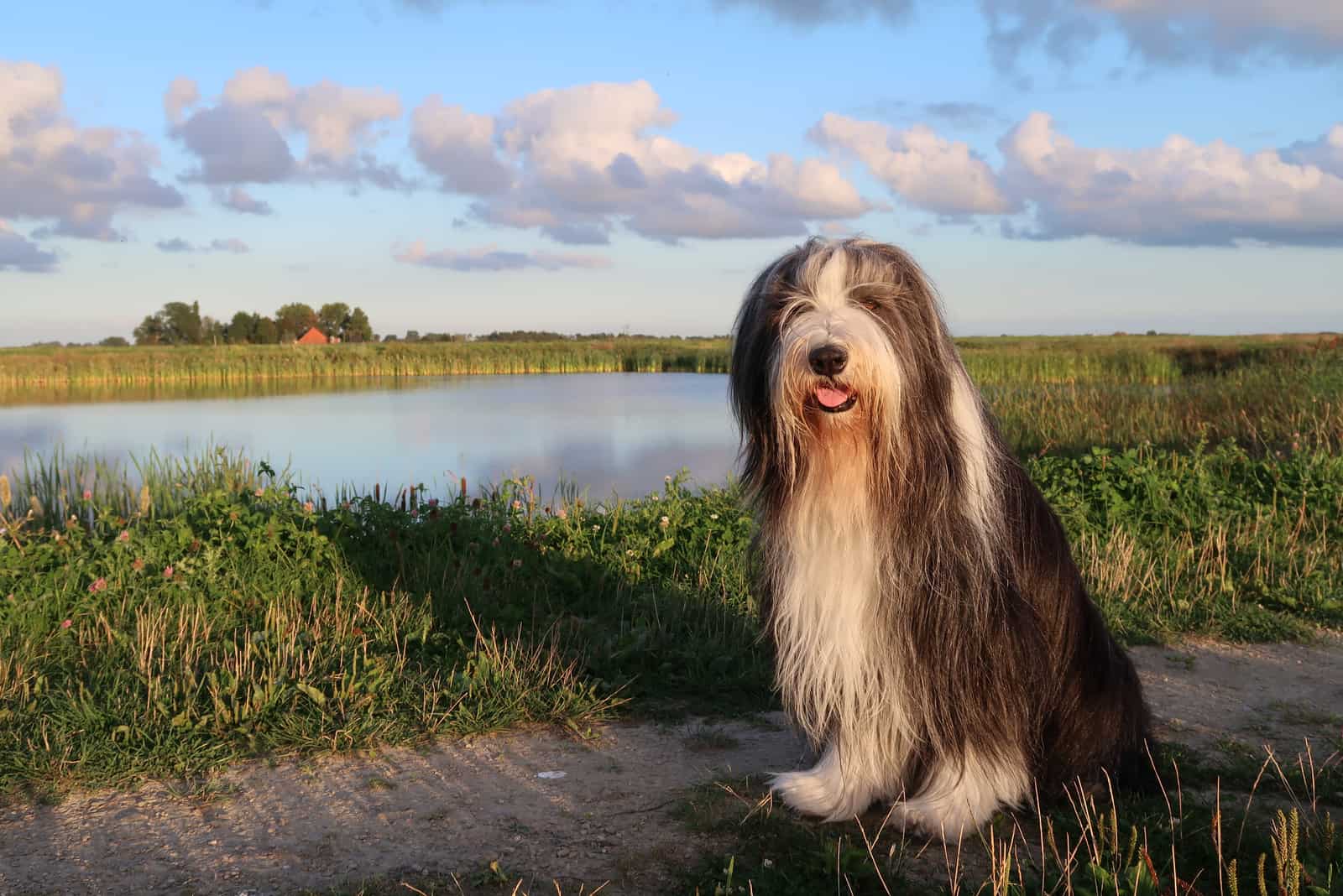
Surprise, surprise, another sheepdog… It’s almost as if there is a hidden pattern.
The Bearded Collie or the Beardie is an old Scottish bread whose name says it all.
At about 20 inches or so of height, they make for a medium dog breed.
They are typically salt and pepper in color, and have long, fine strands of hair cascading down their entire body, and, characteristically along its snout and down its neck resembling silky, gray facial hair; hence, the ‘Bearded’ part of the breed’s name.
Are The Bearded Collie And The Old English Sheepdog Related?
It is smaller and leaner than the Old English Sheepdog, and its fur tends to be finer and straighter, with a prominent ‘beard’ pertaining to its name. Otherwise, it’s easy to mistake one breed for the other.
Anecdotally, it is said to have originated from a couple of Polish Lowland Sheepdogs that had become stranded on the shores of Scotland after a shipwreck, and went on to mingle and mix with the local breeds. This is not that unlikely as the breeds do share a great degree of similarity.
This Wizard Bearded Dog Has A Joyful Temperament
It is a very energetic and upbeat breed of dog, and it requires a lot of attention and activity.
It’s well suited for outdoorsmen, and it enjoys walking long distances and exploring the wilderness.
This dog, however, needs to be brushed, combed, and detangled every so often so that its fur doesn’t clump up and become ragged and dirty.
Special brushes and an anti-tangle spray are recommended for the Bearded Collie.
It should be fed premium dog food 3 to 4 times a day, along with the right supplements to keep that exquisite coat shiny and healthy.
The Komondor
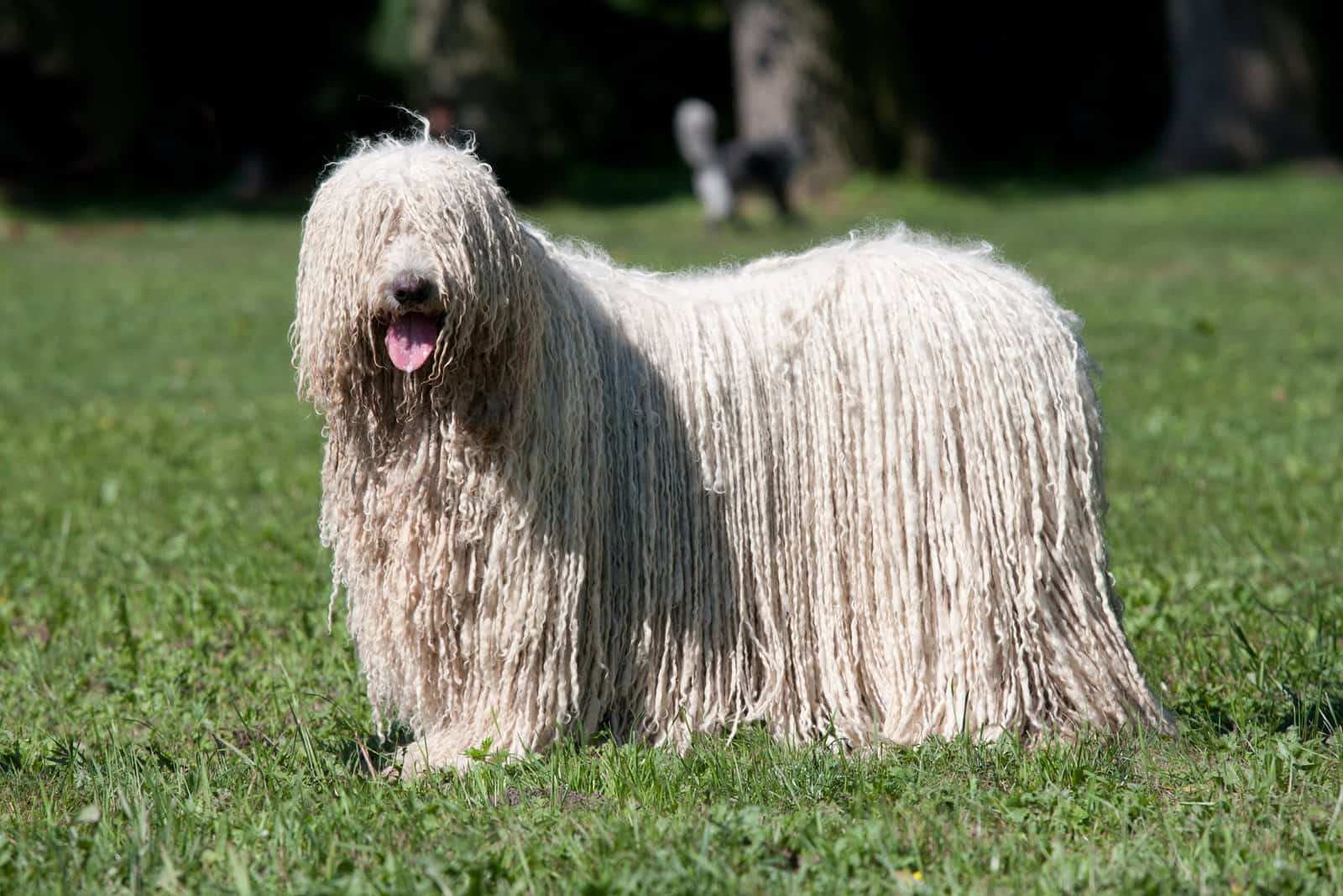
This is perhaps the shaggiest dog breed of all.
Often seen sporting thick locks of wooly fur resembling dreadlocks more than a dog’s coat, this Hungarian breed is the poster child for shaggy dog breeds.
Also known as the Hungarian sheepdog and the ‘mop dog’, the Komondor was brought to the plains of Hungary by a mysterious nomadic tribe called the Cumans.
And, while the Cumans are no longer here, they left us with this wonderfully peculiar breed; hence, its Hungarian name, Komondor (Quman-dur). The Cumans are long gone, but their breed lives on and its authentic, unique qualities remain unchanged.
The Komondor are known to grow over 30 inches (76 cm) tall – one of the larger breeds of dog. Despite this, it is very agile and fast as well as being fairly muscular and robust.
People might confuse this dog with the Puli; a related Hungarian shaggy dog type, but the Puli is much smaller and comes in many colors, while the Komondor only comes in one.
This dog is exclusively pure white, and has been so since time immemorial.
But, Does It Shed? And, Do I Want To Impulse-Buy One Right Now?
This dog’s dreadlocks do not shed. They do not fall out nor do they need extensive grooming… they just need to be kept relatively clean and nature will do the rest.
The shaggy breed’s coat clumps naturally in a way that makes it look like it has been meticulously braided for the past three hours.
Some dogs just get it all, eh?
Not quite, as the Komondor has its few setbacks as well.
First off, they are particularly feisty and hard to manage.
Their herding instincts lead them to try to ‘herd’ their owners, which makes them behave stubbornly or lash out if they deem they might have been wronged.
They require a great deal of socialization. This breed’s temper is something that needs to be worked with.
This is a reasonably silly looking breed of dog, and it might be amusing to some people to see one, especially kids. These dogs are hard to read and quick to react, and it might even be quick to bite in a tricky situation.
These are not dogs that you should consider if you are a first-time owner or if you live in a flat or an apartment.
The Komondor is an ideal dog for the farm, and it is suited to farm life as a watchdog, a guard dog, a herding dog, or even a hunting dog if that suits your taste.
This braided dog is the ideal farmhand, and it is meant to be a working dog in every sense.
If you have allergy issues, maybe you should check this breed out for protection rather than the German Shepherd, Rottweiler, or other short-haired dogs.
The Spanish Water Dog
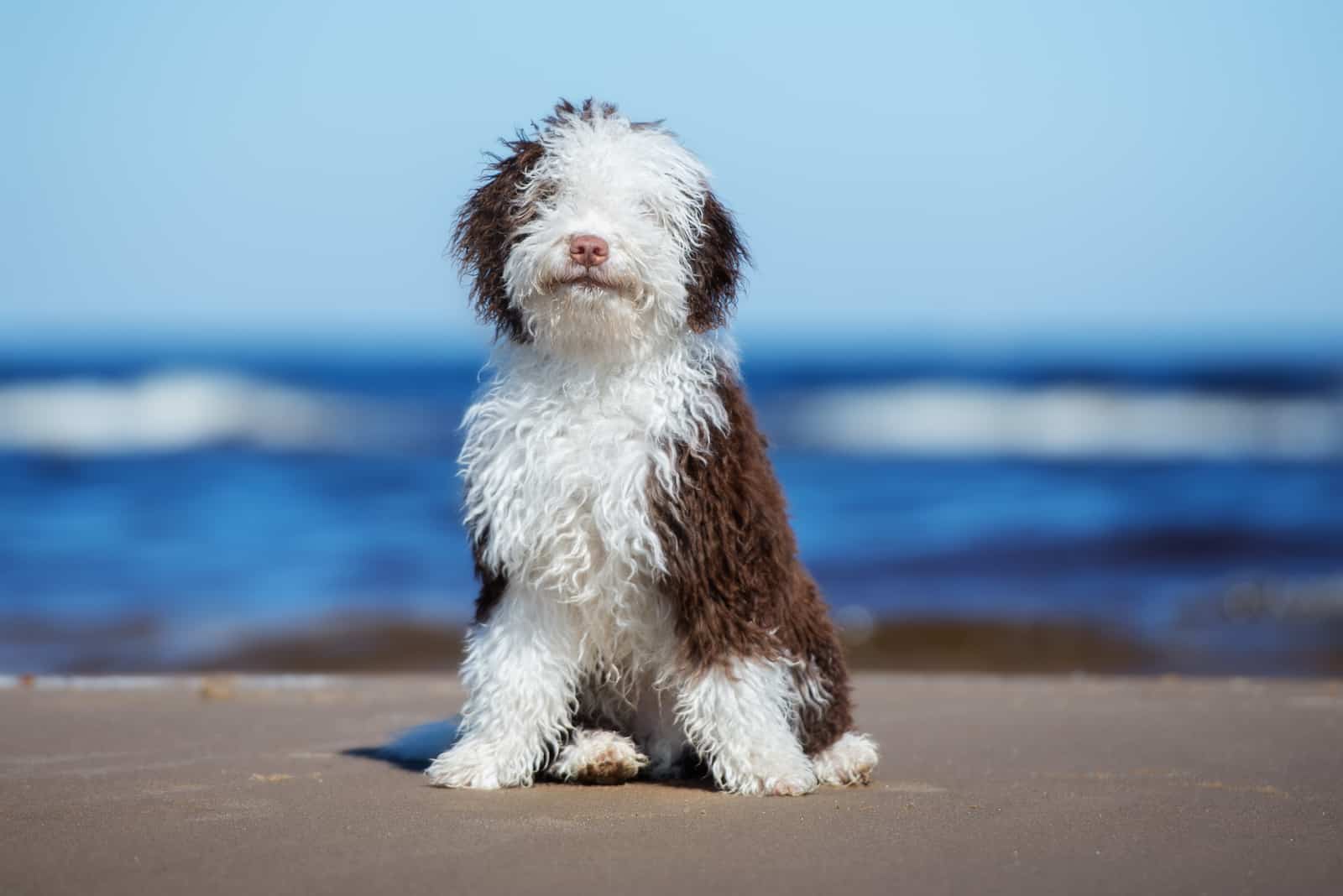
Let’s take a break from the scruffy sheepdogs on our list and examine this wonderful water dog. Also known in Spanish as perro de agua español, it gets its name from being an excellent retriever from water, having been used as a gundog for most of its history.
If You’re Looking For A Medium Fluffy Dog
The Spanish Water Dog is very compact in size, slightly smaller than the Standard Poodle, but more muscular, and with a well-rounded, athletic body capable of launching itself into water and swimming at high speeds.
Its luxurious curly coat is one you should not groom at all!
This dog’s long hair grows instead of shedding, and it is trimmed instead.
While there’s no such thing as a completely hypoallergenic dog, these come pretty close.
Although it looks like a fancy show dog sporting fine, luxurious hair reminiscent of the Poodle, the Spanish Water Dog spent much of its history as a working dog, which makes them so hardworking, loyal, and eager to please.
These traits make them easy to train and a very good companion dog overall.
They can prove to be wary around strangers, and early and continuous socialization with a variety of people and other animals is important for the dog to grow up healthy, happy, and stress-free.
The Pyrenean Shepherd
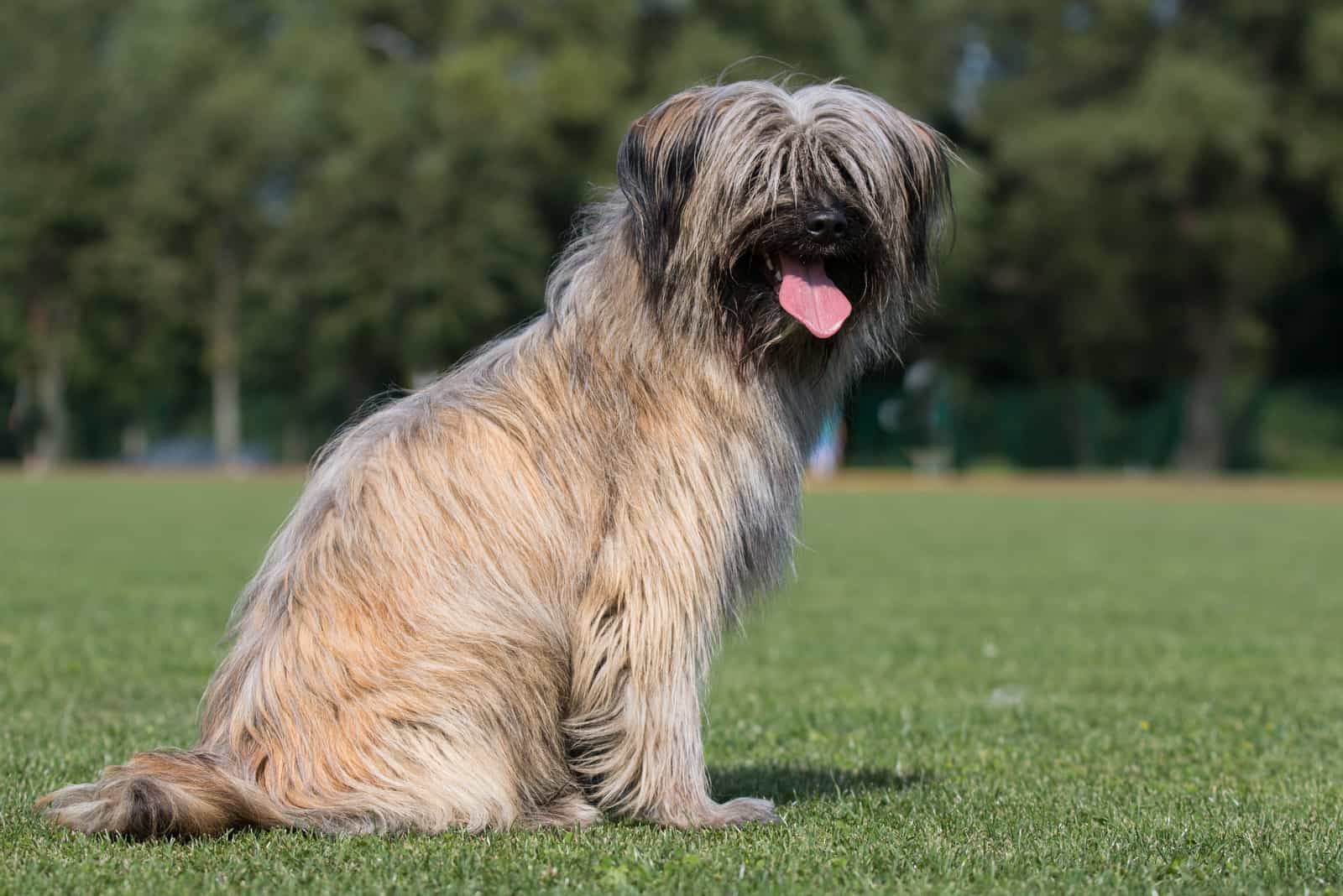
The Pyrenean Sheepdog is a small herding dog native to the Pyrenean mountains of France. It’s unusual for small dogs to be herding livestock. There are usually bigger dogs ‘stationed’ with them to protect them.
Small dogs herd sheep, cows, etc. by biting their heels and leading them on to where they need to go.
This dog has more of a long, straight-haired coat and less of a fluffy one than the previous dogs on the list. They sport thick facial hair, floppy ears, and a short tail.
There is also a smooth-faced variant that doesn’t sport a thick mustache, and it looks completely different!
Pyrenean Sheepdogs usually stand between 15 and 20 inches, which is pretty small for a herding dog. They make up for it with spunk. And, boy, do they have some!
They are extremely active, and hard to take care of without a big garden or yard where they can wear themselves out.
This breed is very untrusting of strangers, as are a lot of other sheepdog breeds.
The Briard
This fluffy coat-rocking dog originates from the north-central French region of Brie. It is immediately recognizable for its unique hairstyle, with bangs so thick that they cover its eyes completely.
(Think: the Thurston Moore of dogs.)
Is This Scruffy Dog Medium Sized Or Large?
The Briard is a medium-sized dog, typically around 23 inches at the shoulder.
It’s a delight to see this dog’s long, wavy strands glistening in the sun as it elegantly strides by. If I hadn’t researched it, I would have NEVER imagined it as a herding dog or a working dog in general, but that’s exactly what it is in its heart and soul.
Its glamorous looks and natural intelligence won the hearts of breeders, and a bitch of the breed was the unexpected victor at the very first Paris Dog Show.
World War II did a number on this breed, as they were being sent to the frontiers, and they were capable military and police dogs as well.
It was a difficult task to find purebreds after the war and repopulate the beloved breed.
But, Does The Briard Have A Nasty Temperament?
Hmmm, sort of…
It’s a moody beast that prefers the company of its owner alone the most. Most of these fluffy shepherd dogs are very independent, and the Briard is no exception… its grouchiness and need to do things its own way borders on disobedience!
This dog requires a firm hand and a soft approach. Perhaps you should even consider sending your dog to a proper trainer. This breed is able to learn very quickly; it just needs the right attitude, and that’s something you should be well aware of if getting a French Briard because punishing it might make this breed extremely resentful.
It has a high sense of itself and its personality, more so than many other dogs.
The Rough Collie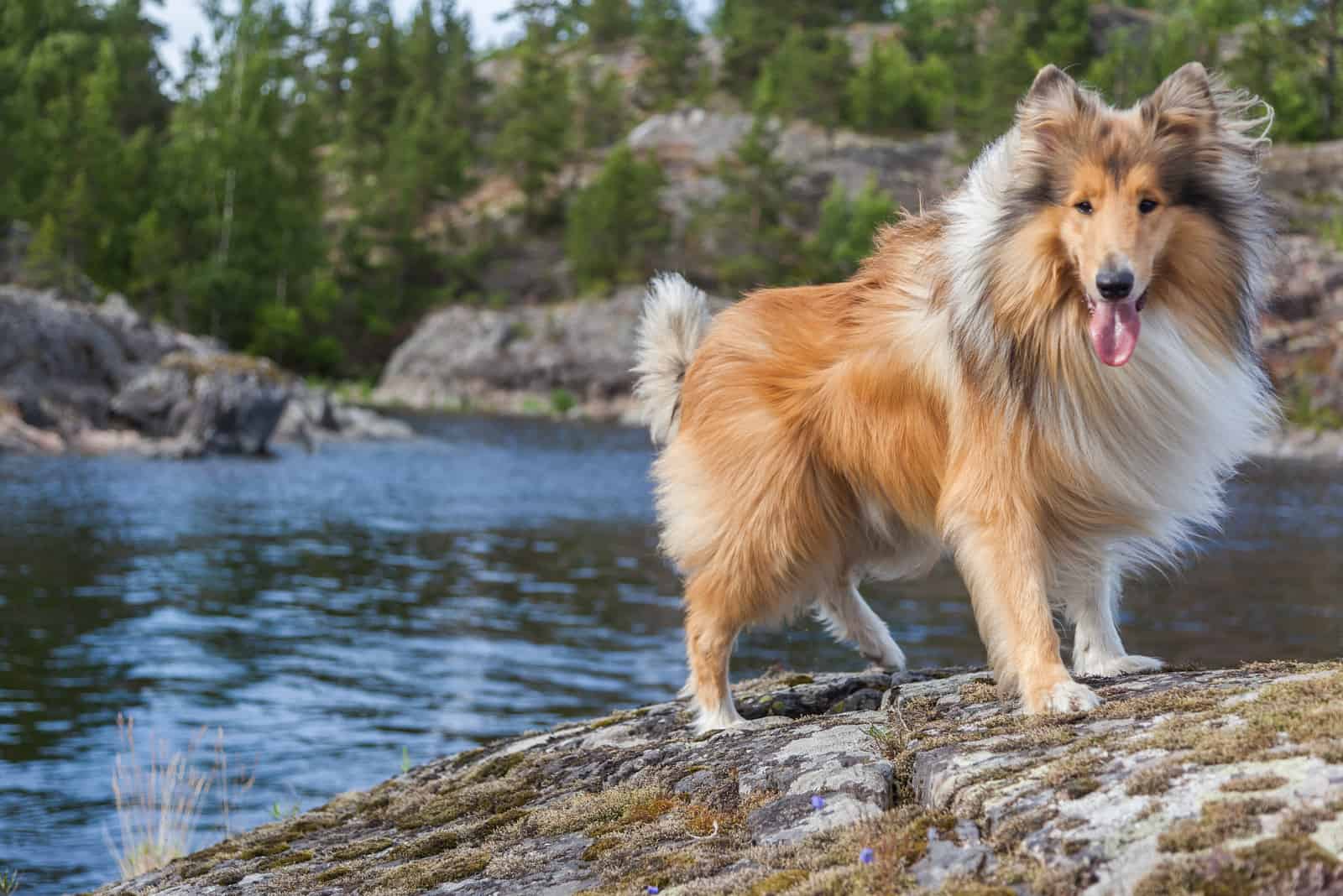
Of course, the fabled Lassie would find itself on this list!
The Rough Collie (and its cousin, the Smooth Collie!) is a breed descended from a variety of Scottish herding breeds, and it began its history as a herding dog.
As owning a dog became a status symbol and a fashion statement during the industrial age, and as dog shows came about, the Rough Collie saw itself becoming less and less of a working dog and more of a companion dog bred for shows.
As such, the breed changed in appearance over the ages, being bred for aesthetics rather than practical use.
Some Info On The Large, Scruffy Dog:
Today, the Rough Collie stands as one of the most prestigious and elegant breeds in existence, owing much of its popularity to the famous novel, “Lassie, Come Home”, by the writer, Eric Knight.
Queen Victoria also famously owning one in her day and age helped popularize the breed.
It is of an elongated and slender build, sporting a very long snout akin to the Greyhound or the Borzoi. Its ears are strong and alert, but tip to the side somewhat. Some people choose to correct this tip by binding the ears of Rough Collie puppies.
Its thick double coat is the most characteristic attribute of this breed, and it must be maintained with regular brushing daily in order to preserve its natural shine and silky smoothness. It comes in a wide spectrum of colors and patterns, with the most common being Sable.
Rough Collie colors also include unusual and exquisite patterns like Tricolor, Blue Merle, and so on.
Why Is The Rough Collie So Popular?
This beast is very easy to love. There’s something in its beautiful, intelligent deer eyes that brings deep comfort to people and makes them feel understood. Its beautiful appearance is no facade because what lies within is an equally beautiful soul.
These smart, loving, and loyal fluffy breeds are easy to teach by using only some understanding and your time.
If you start early, you could work to unlock your dog’s full potential because Collie breeds are some of the smartest in the world.
Getting your dog to socialize early and often is crucial for any pooch, but when you have a highly capable dog breed like this one, you could as well take it to a trainer.
A capable ethologist could definitely do wonders with this bright and mindful breed.
With the Rough Collie’s analysis, we have run out of fluffy sheepdogs to talk about.
Those left are small, shaggy breeds completely opposite of every one of the mentioned sheepdogs. You will find that they have equally fascinating backstories, and are of historical importance as well.
Without further ado, let’s go over the remaining four small hypoallergenic breeds that don’t shed.
The Yorkshire Terrier

This small, energetic lapdog is a real live wire.
Looking like a wind-up squirrel toy, this breed was purposely bred to be just what it is, and people adore them. It is one of the most popular and well known of the many terrier breeds.
Although originally bred for ratting purposes like a lot of terriers were, this dog has never worked a day in its history. It is a companion dog through and through.
The breed was at the height of its popularity when the Second World War hit, during which, it sadly almost went extinct. People had no use for small, yappy dogs in those dire times.
The story of a Yorkie named Smoky, who was found by American troops and that accompanied them across the pacific front as a war dog, became quite famous in the post-war years of the U.S.
It’s news reports and amazing stories of dogs’ feats that saved a lot of species from extinction, like what happened to the Japanese Akita.
It is a very energetic breed, and it demands constant attention. This is the type of dog that will drive you crazy with its hyperactivity and apparent obsession with you and everything you do.
Sometimes, they can be very spoiled, albeit in a lovable way, demanding constant pampering and catering to its needs. A lot of Yorkies are persistent yappers that never shut up. This is something you might want to work on as far as training your dog goes.
So, A Hypoallergenic Small Dog Or A Hyperactive Mental Giant?
Both, heh…
The people I feel who fit the Yorkshire Terrier breed the most are people with a lot of spare time or home time who like to be entertained and always have a show put on for them by their clingiest friend.
So, resolve when training your Yorkshire Terrier. It will do most everything to distract or sideline you. Don’t fall for such cheap tricks.
Yorkie puppies are so tiny and adorable that it is hard to take them seriously, but give them proper socialization and your insistence on good behavior.
Small dogs can become as unmanageable as large dogs if they are neglected. The same goes for virtually every dog. They just don’t know any better.
It is up to us to be their guides and teach them the ropes of worldly matters in the language they understand the best – patience.
The Bichon Frise

No, for real… medieval merchants carried these dogs with them to faraway lands and used their mere presence to sweeten the deal. I imagine the dog was often part of the deal as it wasn’t always a common sight outside of Western Europe.
The bichon à poil frisé translates to ‘curly-haired dog’ from French, and it is just that: a small, white, curly ball of joy.
It is a very old breed, descending from water dog stock and making its way up into the hearts of the top-ranking members of society.
This little lapdog’s history is nothing short of an epic saga.
Cherished for their upbeatness, loving faith, and positivity, the Bichon Frise was a common sight at both royal courts and Renaissance briggs exploring uncharted waters.
This dog, however, doesn’t have a pompous or royal attitude.
It is very happy-go-lucky, and it will enjoy whatever it has, and adapt to every person equally well, having walked alongside the Bourbon dynasty as well as common peasants, circus performers, wayfarers, you name it!
We are all human, after all, and in a desperate need of a friend.
And, the Bichon is just that!
What Does The Bichon Frise Look Like?
Bichon Frise are always white, and have small, beady eyes like a stuffed toy. Their muzzles are short and their build is gentle and frail.
This dog reaches 12 inches at its tallest. While it is possible for it to be bigger, it is rare and not a characteristic usually bred for. The Bichon Frise is related to the Maltese, the Havanese, and the Bolognese dogs.
The soft fleece-like coat on this fluffy lap dog is hard to maintain, especially if you’re interested in competing at a dog show.
Your kennel club ambitions might have you running to the groomer as often as once every two weeks in order to keep that fluffy coat clean, soft, and in shape.
Can I Groom a Bichon Frise Myself?
Well, it’s one thing to use a pair of clippers and shave your Bichon Frise down like a recruit marine, and another to trim your dog to stand out in front of judges.
Jokes aside, you wouldn’t do that… would you?
Meh, we don’t judge. Either way, you should take care that your dog doesn’t get hair in its eyes, and that its movement isn’t hindered in any way, and you’re good to go.
It’s what’s on the inside that counts anyway.
Because this dog doesn’t shed per se, different brushes are used on its fur… the calming type rather than the undercoat-thinning type.
The Poodle

Everybody knows about the Poodle!
Over many centuries, it went from being a water dog to a circus performer to a prominent show dog valued for its athleticism and intelligence as well as its impeccable fluffy coat.
This classic dog comes in three official sizes (Toy, Miniature, and Standard).
There are other sizes like the Medium and Teacup poodle that are out there on the market. The breeding of Teacup poodles especially is highly controversial, as a lot of these dogs are ill-bred. You would be wise to steer clear of this designer breed and its salesmen.
Its usual soft, curly coat is what makes it so recognizable. Different coat type Poodles, such as the wired type, do exist but are seldom seen. Breeders tend to avoid coat matting on the gentle Poodle.
Grooming The Poodle And Other Poodle Maintenance Tips
Its coat requires a lot of effort to maintain, and many Poodles are groomed at the salon every 3 to 4 weeks. This can be done DIY, but it takes a lot of time and effort to master.
You should use the right slicker brush so your dog’s experience is non-stressful and it doesn’t grow to hate grooming or bath time by association.
If you’re handy with scissors, you can also give your dog a fresh hairstyle remake. The Poodle’s hair is delightfully wavy and satisfying to cut.
If you care about your Poodle’s coat (especially if you participate in shows), you should feed it premium dog food, along with the occasional love-meal carefully prepared as per your veterinarian’s instructions.
The Poodle is prone to a number of health issues, such as Addison’s Disease, Dog Bloat, Adrenal Gland Issues, etc.
The Pomeranian
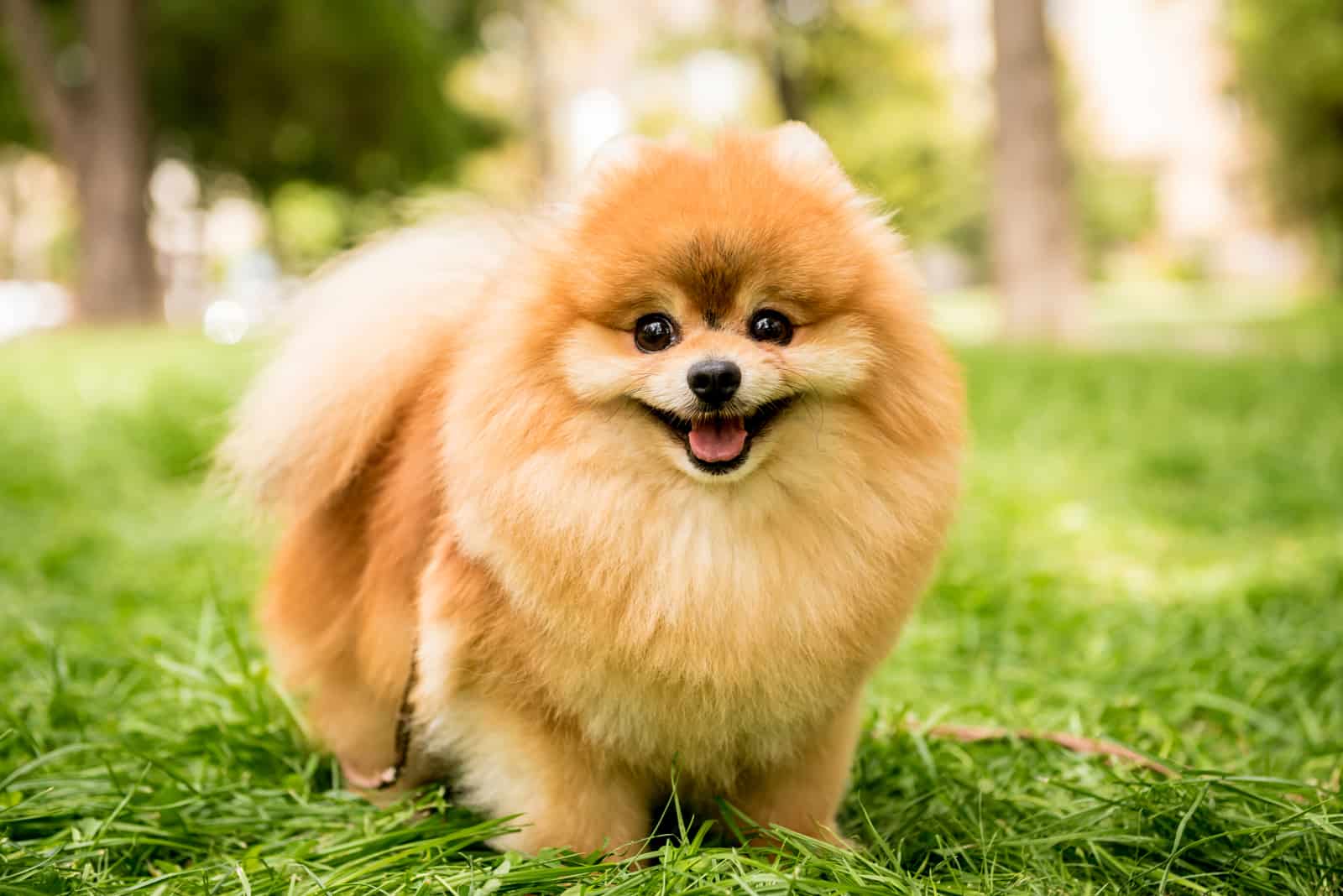
This toy spitz originated in the Pomerania region in north-west Poland, and it is descended from larger Spitz-type dogs, specifically the German Spitz.
It is a tiny breed, weighing only 3.0 to 7.0 lbs., and proudly stands at 8 to 14 inches at the withers.
Its tail is curled along the back, its ears are pointy and upright, and its eyes are small, beady, and black with a small but characteristic spitz snout.
It comes in every conceivable color, from a simple ‘cream’ color to rare color schemes such as blue, wolf sable, or tri pattern.
This lap dog was a favorite of nobility and upper class citizens throughout history, revered for its big attitude and proud demeanor.
Queen Victoria, an avid dog lover, popularized this breed among others.
It is a well-known dog that is loved by many, and it frequently scores high on breed ranking poles across the world.
The Pomeranian requires daily grooming, although it isn’t difficult, and it can be done by yourself easily.
The Pom is a sturdy dog with few health problems, and it is known to live for 12 to 16 years on average if taken care of well.
Although energetic, this dog doesn’t require a great deal of exercise, and as such, it is ideal for older persons.
The Havanese
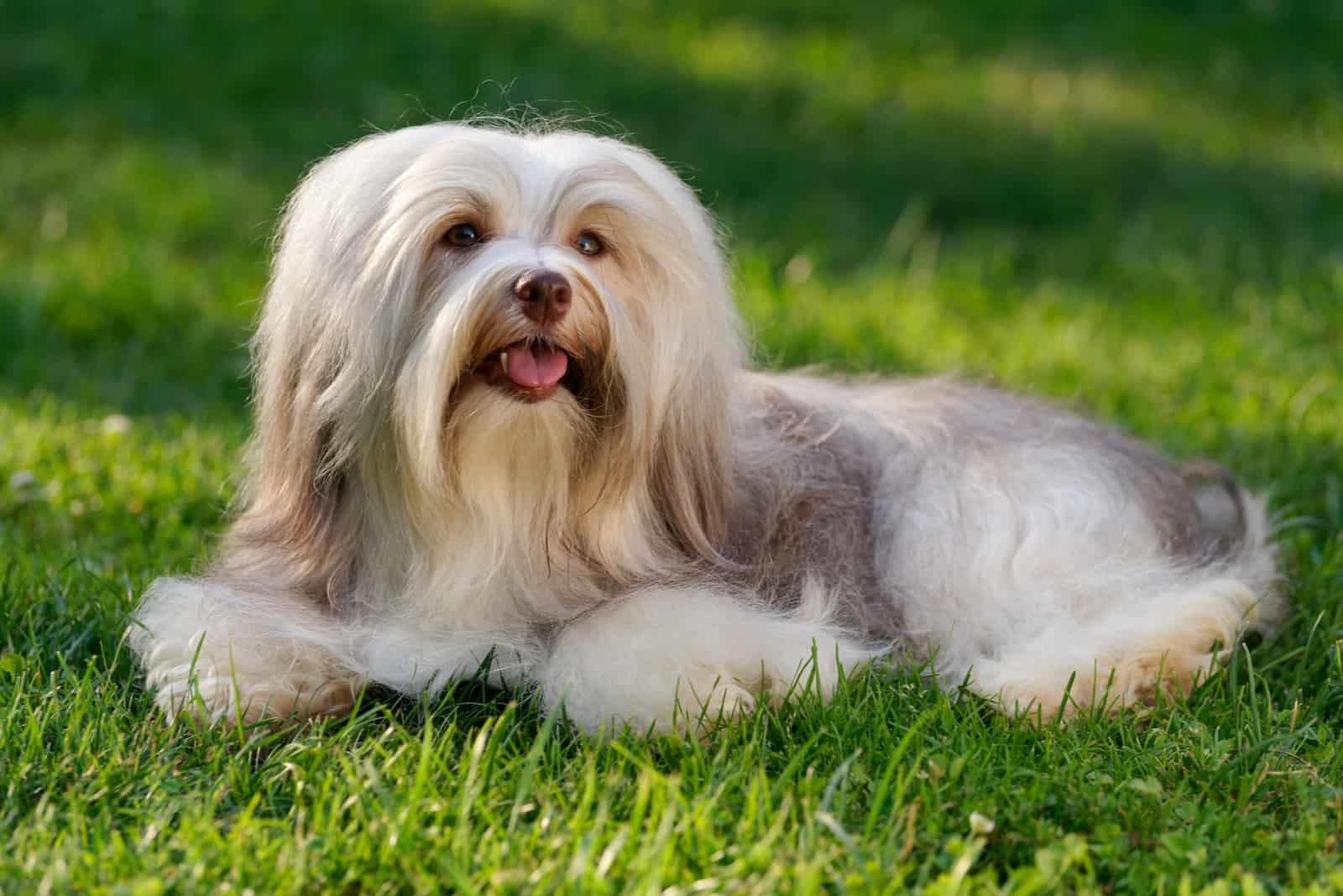
This Bichon-type dog is the national dog of Cuba; its namesake being the capital, Havana.
It is very affectionate and attached, often clinging to its owner’s side. As such, it gets along well with humans and other dogs, as well as cats.
This breed of dog is, however, prone to anxiety due to its clingy nature. It demands a lot of attention and affection; otherwise, it may become stressed.
They are very trainable, and are known to have served as medical stress relief dogs as well as performed in the circus for the amusement of millions.
These dogs have a way of charming their humans, and often end up spoiled beyond all hope by their crazy-in-love owner.
If you have one, at least try resisting those puppy eyes the next time it wants a bite of your lunch. Human food is unsuited for dogs, especially small and frail ones like the Havanese.
Its long, flowing coat requires regular brushing and maintenance, including trips to the groomer, but if you don’t mind, you can have its fur clipped short and make that the end of it. I doubt the dog would mind, especially in the summertime.
It is prone to a variety of joint issues, including hip dysplasia, elbow dysplasia, and chondrodysplasia, as well as cataracts, deafness, etc.
A regular check-up at the vet is a must for the Havanese. Reputable breeders also keep track of these through testing and awareness, and they will let you know if there’s a possibility of an issue arising along the way.
And, To Sum It All Up:
There’s just something that makes these shaggy dog breeds stand out as especially lovable and heartwarming among the canine world. When we see them, we feel instantly warm, comforted, protected, amused, charmed… you name it!
They have certainly been popular throughout history as both companion dogs and working dogs, and they are here to stay.
They come in all shapes and sizes, and their contribution to mankind is immeasurable.
They have big, shaggy heads, eyes hidden behind thick curtains, and gaping mouths with only their canine teeth visible in the hairy mess. Whether they were protecting herds from wolves and bears, traveling the unexplored far reaches of the globe, or lounging about entertaining the King of Spain, these shaggy dog breeds have always been important to man.
Maybe after reading this, you have unknowingly picked one for yourself?
Maybe it is time to make your world a bit warmer, a bit softer, and a bit cuddlier…
We hope this article helps you along the way should you fall victim to any one of these living, breathing comfort zones, pulling you in strand by shiny, silky strand.
Read Next: The 25 Most Expensive Dog Breeds In The World—2022 Edition

